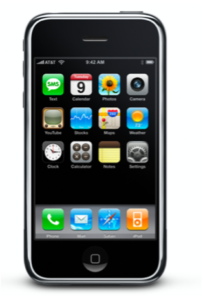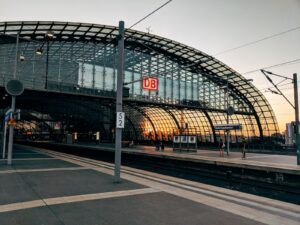Design Thinking: The Process behind Apple´s invention of the iPhone
“A widescreen iPod with touch controls, a revolutionary mobile phone, and a breakthrough Internet communications device”. With the audience eagerly anticipating the unveiling of three new gadgets, Apple CEO Steve Jobs introduced a revolutionary product. The iPhone 1 combined all those functionalities in a single device. Up until now, 2 billion units of the iPhone have been sold. And at the core of the iPhone´s astounding success lies a single, powerful idea: the process of inventing something revolutionary with the power of design thinking.
While Apple’s seamless presentation of the iPhone might have made the invention process seem effortless, it actually was the result of a very thorough and human centered approach to design. By empathizing with the user, Apple identified a need for a smart and easy-to-use phone that could be used anywhere and at any time. This resulted from an observation of the clunky, button-heavy phones that were common at the time and of people having to carrying multiple devices to listen to music and communicate online. Through a process of furthermore defining the problem, ideating solutions, prototyping and testing, Apple was able to create a product that was truly revolutionary and has since become an indispensable part of modern life.

Steve Jobs famously hated buttons as they limit the device’s ability to adapt to various applications run by the user. Drawing on the success of the iMac’s big, adaptive screen, he challenged his team to create a new way for users to interact with their devices that didn’t rely on a mouse or keyboard. Apple had to ideate a new way of making an interaction between the user and the device possible and still keep “The Apple Way” like the stakeholders, such as users, investors and creditors expected.
After realizing that a stylus nor an external keyboard was an ideal solution due to its unpopularity among users, Apple turned to the already existing touch functionality as a potential solution. While touchscreens had been around since 1965, it was Apple that popularized the use of touch, as well as multi-touch, in their products. The iPhone was designed with simplicity in mind, featuring only a home button and three buttons on the sides, resulting in an aesthetically pleasing device with the spirit of simplicity.

But how could they bring something to live that was not established as a guarantee working product? The answer to that lies in testing and prototyping, which happens mostly behind the scenes at Apple. Some of the first prototypes of the iPhone 1 were sold at auction for over half a million dollars, appreciating the incredible effort that went into its creation. With the iPhone 1´s prototyping happening with a high level of secrecy, it was mostly spread out across a large circuit board to test the features. With the software, Apple had to reinvent itself starting with a very rough looking interface, transitioning to an iPod user interface showing a click wheel and ending in the OSX interface, that still is recognizable in the newest generations.
The prototypes were later handed to employees, who should test it under real life conditions. This is only known, since years later, an employee accidently left an iPhone 4 in a bar, months before its official release.
With the help of IDEO, a design Thinking company, Apple managed to get ahead in a highly competitive market. The iPhone was not the first Smartphone, not the first phone with a camera and not even the first device with a touchscreen. But it was the first to combine all those functionalities and even more into a single device, therefor fulfilling the user´s exact need of simplicity and minimalism of design.
In conclusion, the success of the iPhone is a testament to the power of Design Thinking and its ability to drive innovation in the technology industry. The various phases of Design Thinking enabled Apple to invent a product that has transformed the way we communicate, work, and live. The iPhone serves as a reminder of the incredible success that may arise when creativity and innovation are paired with a human-centered approach to design.



